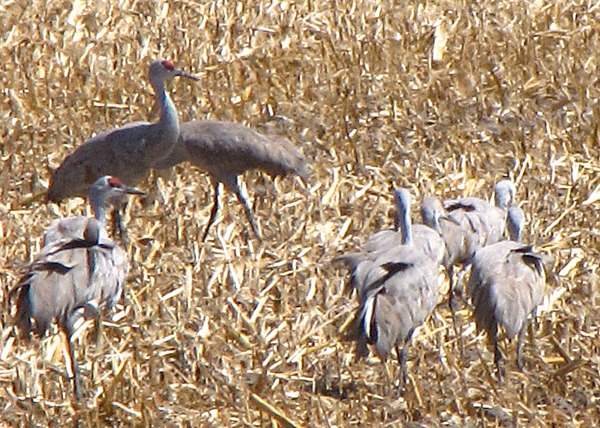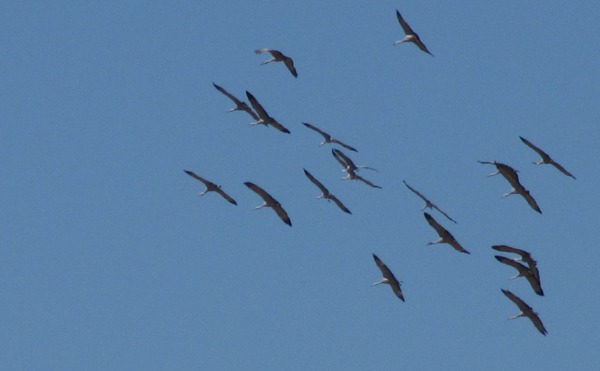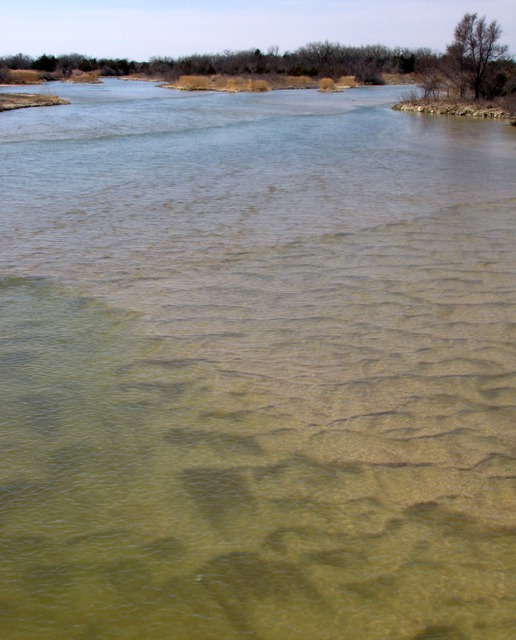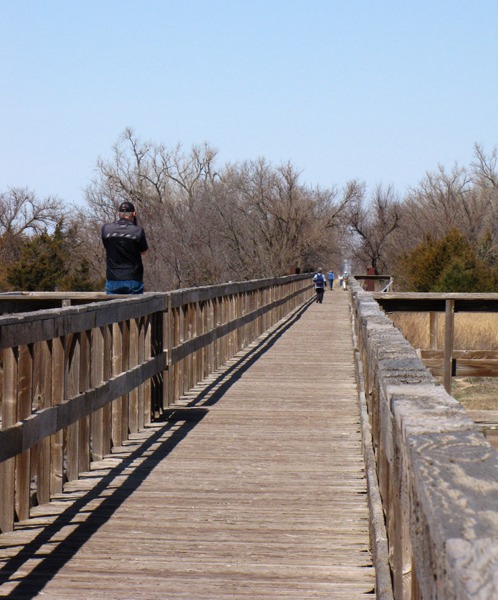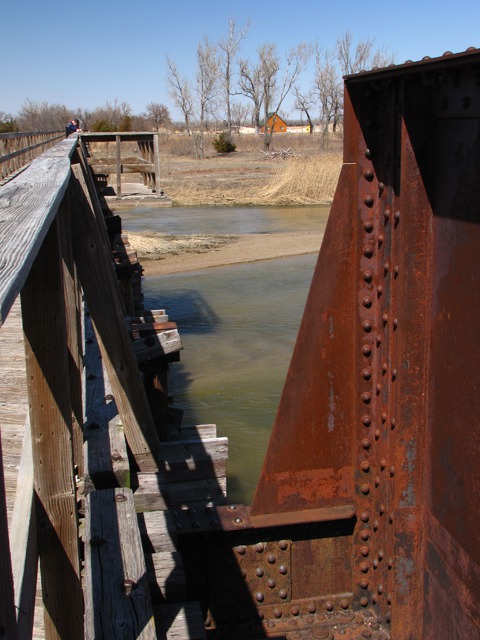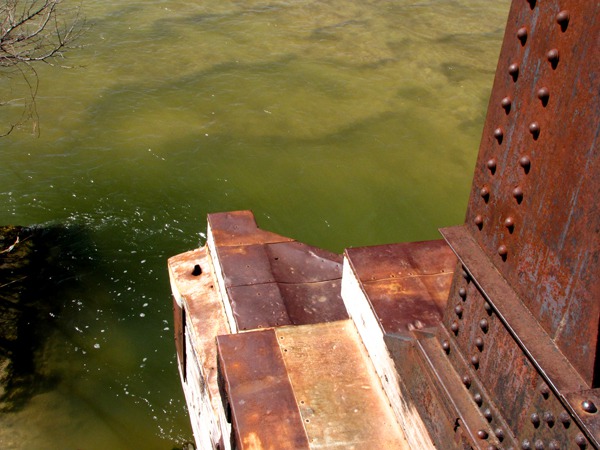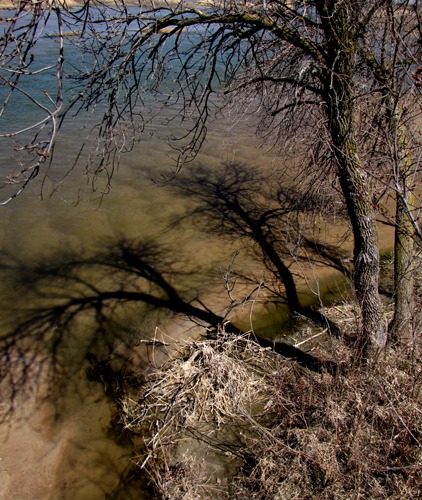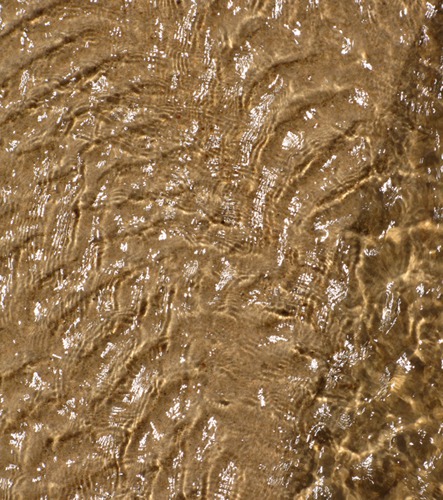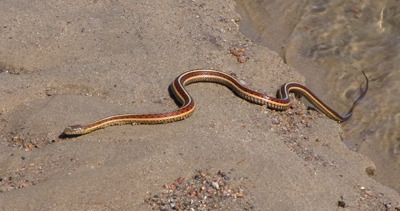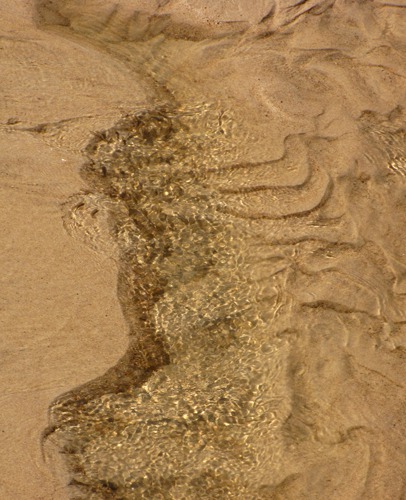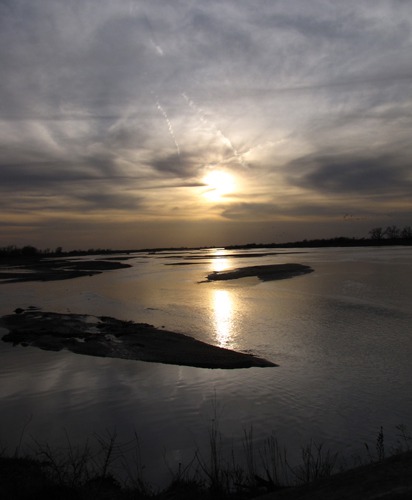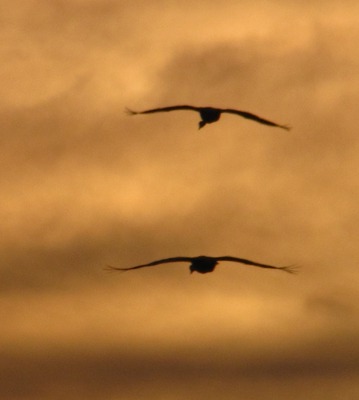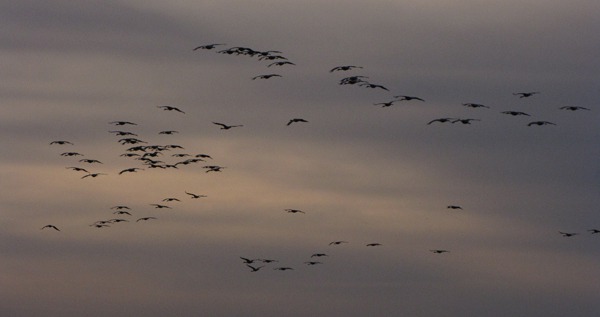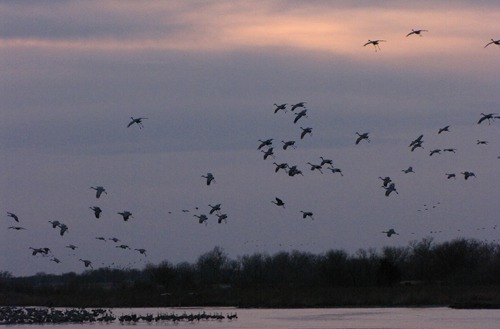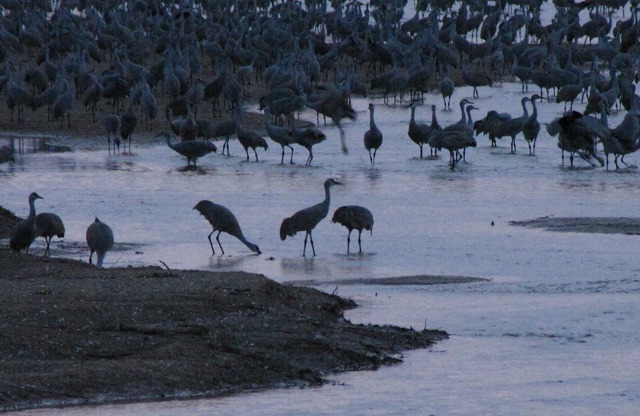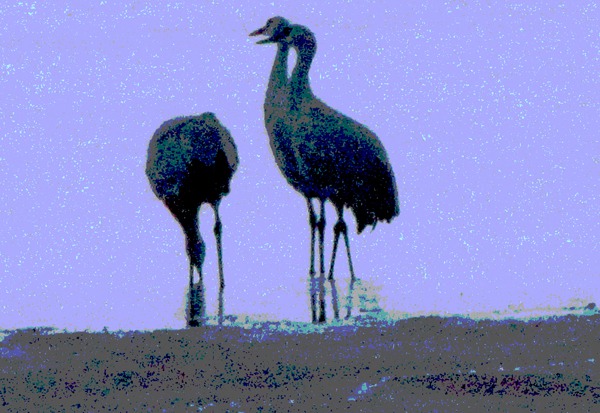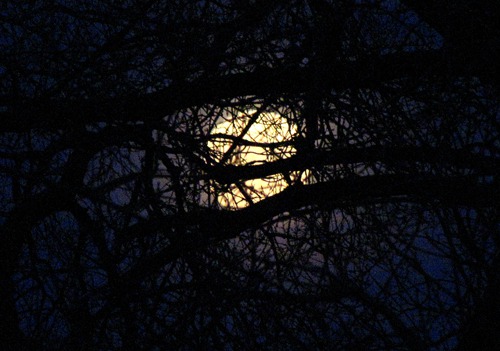Prairie Chickens Dance at Dawn: 29 Mar 2010: The weather continues to improve; we were downright hot today!
Two of our bird-watching party got up well before dawn this morning and headed north to the Switzer ranch where Calamus Outfitters offers prairie chicken viewing. The chickens are dancing right now, and our friends took beautiful pictures. They highly recommend the trip which included a great breakfast.
Four area ranchers have decided to combine forces and turn their properties into the largest nature preserve in Nebraska. Plans include a bison herd. We, of course, would love to see more of this kind of conservation. They have cabins and two lodges available for guests. Activities include hunting and river canoeing on the Calamus River. Their website is www.calamusoutfitters.com.
Fort Kearney Recreation Area: We began our day at the Fort Kearney Recreation Area which offers 186 acres dotted with sandpit lakes. In the spring, the world’s largest concentration of Sandhill cranes and waterfowl gathers in the central Platte River valley.
A rails-to-trail there leads to a bridge over one channel of the Platte -- a perfect crane viewing venue early morning and late evening. Some of us continued on the 1.8 mile hike to the end -- a burned-out railroad bridge over another channel of the Platte.
Kettling Cranes: Cranes kettled overhead in loud flocks. Kettling is a tornado-shaped flight pattern that happens when a flock begins to circle and circle testing the updrafts and wind and when the wind proves favorable, eventually disappears high in the sky.
The folks at Rowe Sanctuary told us that behavior probably means the birds are starting to leave to continue their journey. Some have now been here long enough to rest and gain the necessary weight to continue on to the Arctic and Alaska and even Siberia. If the birds fly up to their 3,000 to 5,000 foot cruising altitude and find favorable winds aloft, they head out. The winds were from the southwest today -- a good wind for fat cranes. They gain as much as 18% more of their body weight here in the corn fields.
Migrating Cranes: When they migrate, they ascend to cruising altitude, then glide as long as they can, find another updraft thermal, ascend again, and continue that for 350 miles a day for 3500 miles for those going clear to Siberia.
So we enjoyed our hike, and, as you can see, Brian took lots of gorgeous river photos. After a lovely picnic in the park, we headed down the road to Rowe Sanctuary for another night in the blind.
What do Cranes Eat? As we drove, we wondered about these ditches in the corn fields. Brian learned that the Audubon Society continually monitors the water quality in the ditches cut throughout the country, checking for the nitrates and phosphates from fertilizer run-off from the fields. The water is full of fresh-water snails which are now a mainstay of the crane diet; they must have the calcium found in the shells to produce their own egg shells. There are still shrimp in the river, and they provide another protein and calcium source. One biologist told him that when they dip a bucket in these ditches, they find a thousand snails per bucket!
Historically the cranes ate salamanders, frogs, river shrimp, snails, and plant tubers from the miles and miles of wetlands bordering the river. That ecosystem has been almost completely drained and plowed, and the plant tubers they used for energy have been replaced by corn fields -- so the birds now eat corn, along with the insects harbored by the corn stalks. The salamanders and frogs that were once a key element of their diet can't survive in water full of fertilizer so they're mostly gone.
Who Watches Cranes? Fascinating people are fascinated by these cranes -- we met an immigrant from Slovenia, a photographer from Norway, and a filmmaker from Scotland whose family served as his crew. An elderly retired farmer we met and his frail-looking wife have been coming to see the cranes for thirty years! He said the cranes literally saved the town of Grand Island; crane watching is big business in this area.
Viewing Cranes: The viewing was spectacular tonight. We didn't need coats, gloves, layers, and hats this time. The birds came in fairly early, around 7:30. Their calls filled the air as the V-shaped flights came from all directions. Birds gracefully settled onto the sandbars and commenced their evening rituals -- bathing is accomplished by rolling in the water. Each took a long drink of river water. Many hopped and danced. What a sight and sound!
As an added treat, two river otters swam in the lagoon just beside the blind. Unfortunately it was too dark to get any photos of them.
So a great evening in the blind and the full moon to guide us home.
We're headed back to Valentine, NE tomorrow after an amazing four days watching one of nature's wonders. The rattling cries of thousands of cranes are still ringing in our ears.
Louise with photos by Brian. Text and Photos Copyright 2010 -- Goin Mobyle, LLC


